

Entire Set of Printable Figures For
Development
of Pecking in Ring Doves - Balsam & Deich
![]()
Ring Necked Dove in Tree
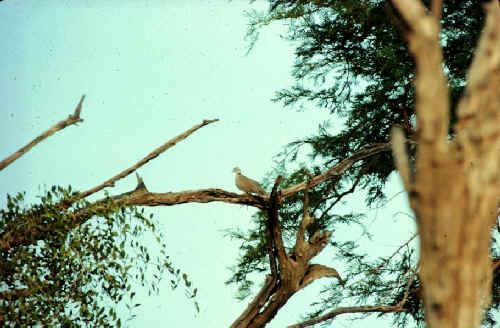
![]()
Videos can't be printed.
![]()
Gape Transduction System
The Hall-effect chip (B) produces a signal that is proportional to the strength of the magnetic field generated by the small magnet (C) attached to the lower beak. The signal is fed (A) to an amplifier and computer for further processing.

![]()
Hall Effect Tracing
The top tracing shows the gape in millimeters. As the birds head thrusts toward the seed the beaks open a few millimeters wider than the seed. Once the seed is grasped there is a plateau in the record as the head is brought up. The brief openings occur as the seed is moved to the back of the beak. The rightmost part of the curve shows swallowing. The lower record is the velocity of the opening. The multiple velocity peaks during the intial gape is characteristic of most responses of adults.
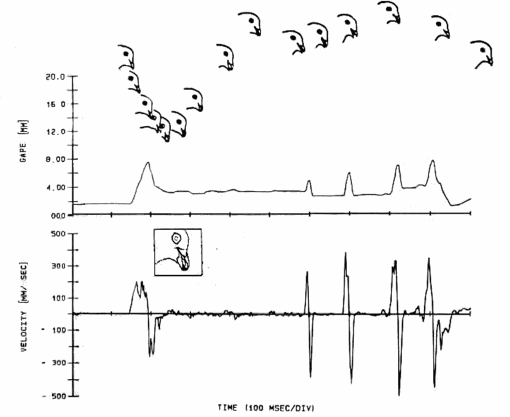
![]()
Dove and Eggs
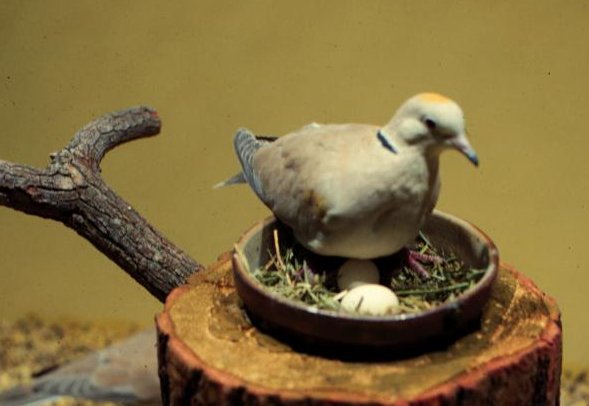
![]()
Videos can't be printed.
![]()
The amount of crop milk and seed found in the squab’s crop is shown for the first 3 weeks post-hatch. The amount of crop milk initially increases and then declines. The amount of seed in the crop progressively increases after day 5 even though squab do not succeed in picking up seed until around days 16-18. This gives squab a lot of experience with seed in their beaks prior to the initiation of independent feeding.
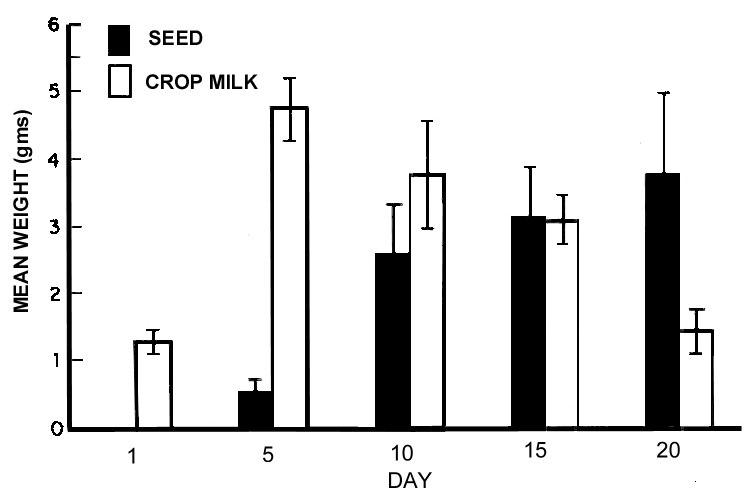
![]()
Squab were observed for the first 60 minutes after light onset in the morning. The percentage of 10-s intervals in which begging was observed is plotted as a function of squab age.
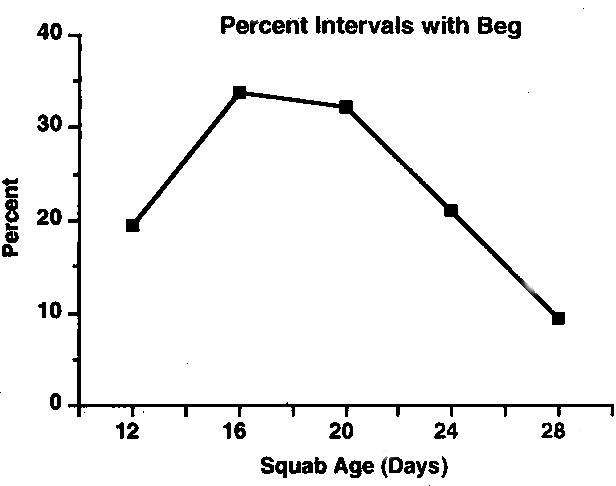
![]()
The efficiency of begging and pecking is plotted as a function of squab age. Begging efficiency was computed by dividing the number of 10-s intervals in which the squab begged by the number of times they were fed by a parent during the first 60 min after light onset in the morning. Pecking efficiency comes from an experiment in which squab were deprived of food overnight and then given a 20 minute test in which seed was spread across the floor of an aquarium. Pecking efficiency is the total number of pecks divided by the total number of seeds eaten.
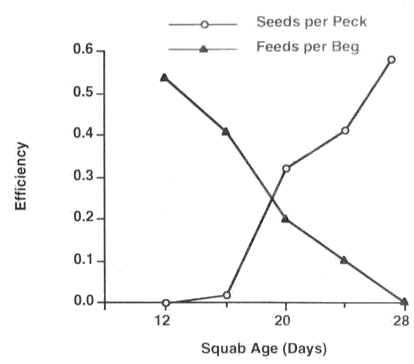
![]()
Squab were deprived of food overnight and given a 20 minute test in which seed was spread across the floor of an aquarium. The total amount of pecking is shown as a function of squab age.
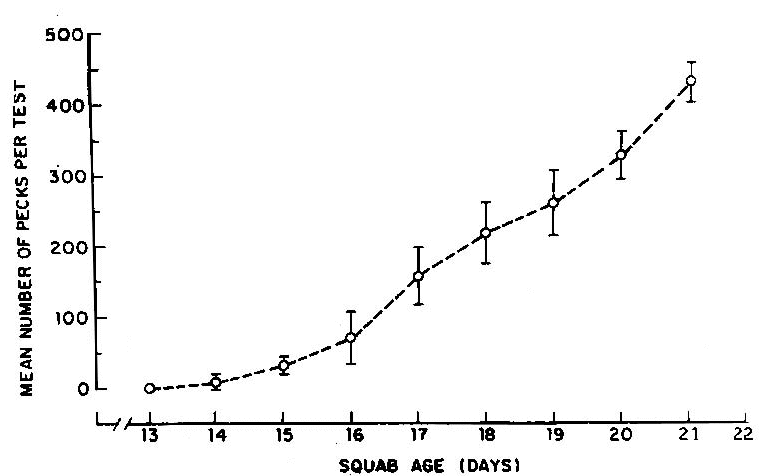
![]()
In several experiments we have shown that the pairings of seed with food are
essential for the development of normal pecking. Three groups of
squab reared on the powder diet are shown in this figure. The paired
subjects were exposed to the sight of seed for 20 minutes and then immediately
fed by the experimenter on days 14-20. The explicitly unpaired subjects
were also exposed to seed for 20 minutes but were fed after a 2 hour delay.
The context subjects were exposed to the test arena with no seed but fed
immediately after the exposure. The data show that only subjects for whom
feeding occurs in close proximity to exposure to the seed come to peck at high
rates when they are tested on PD21.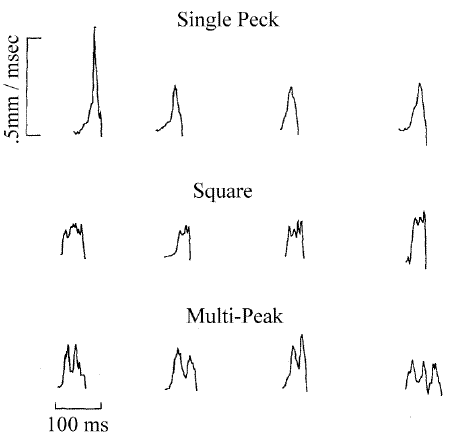
![]()
As the birds get older and improve in efficiency the multi-peak form
comes to dominate. All squab move through the velocity types in the
same order. The figure below shows how the relative frequency of
these peck types changes during development.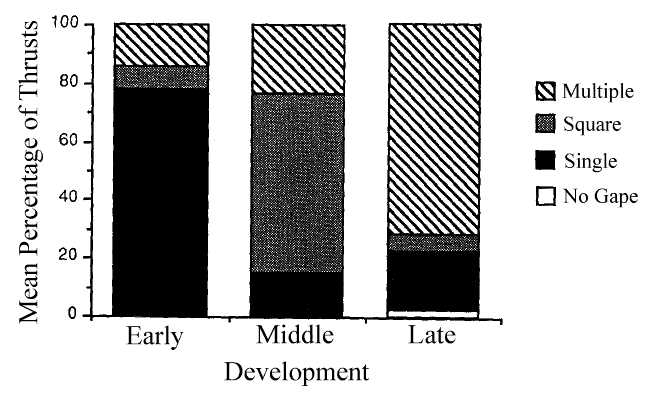
![]()
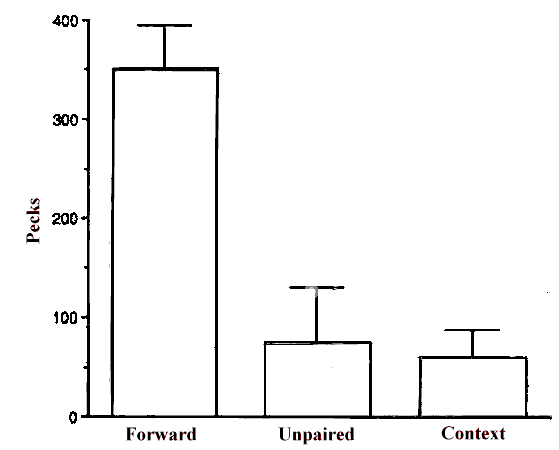
![]()
The schematic diagram shows the 3 branches of the trigemimal nerve. In the experiments reported below subjects received nerve section of either the opthalmic or mandibular branches. Section of the mandibular sensory branch was carried out beyond the termination of the mandibular motor branch.
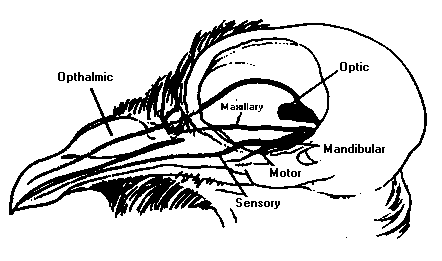
![]()
This shows the types of errors made by an adult prior to and after bilateral ophthalmic sections. The errors increase after the surgery, but notice that the immediate effect is to produce a small increase in grasping errors. In these cases, the bird made contact with the seed but could not hold it in its beak. Subsequently grasp errors decline but spatial targeting errors increase in which the bird pecked but either missed the seed or knocked it away. The bird frequently misses the seed toward which its peck is directed. This demonstrates that the trigeminal input plays the important role of giving feedback about the success versus failure of the spatial aspects of the peck. When that feedback is attenuated or perhaps eliminated, the targeting becomes more variable. Thus far, our sham controls do not show decreased efficiency of eating, indicating a specific effect of deafferentation.
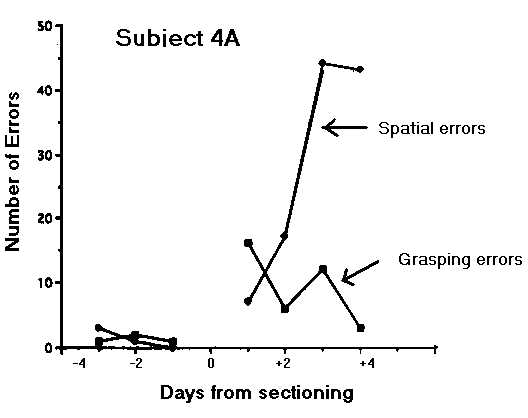
![]()
Normally reared and sham operated squab are efficient at eating the seed. Reduction of the trigeminal sensory input slows the development of efficient eating. The experimental subjects were given either unilateral or bilateral sections of a single branch of the sensory nerve (either mandibular or opthalmic branch). The delay in development was related to the degree of disruption in the sensory input. In the 5th, week squab with unilateral lesions were approaching the efficiency of the unsectioned subjects whereas the squab with bilateral lesions were just beginning to show signs of improvement.
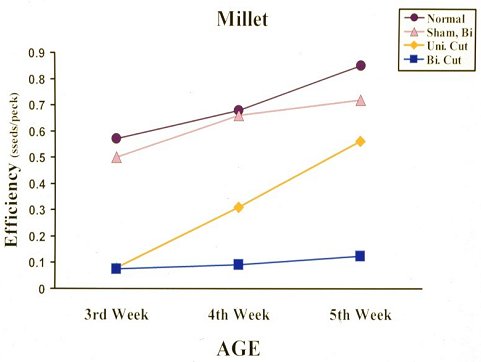
![]()
The subjects were reared for 1.5 -2 years on the No. 2 pellets (2 mm in
diameter). During 3 test days they were presented with 10 pellets of two
sizes that they had never before encountered. The figure shows the
average frequency of different error types over the 3 days. They made very
few errors on the No. 1 pellets (1mm) but made many different types of errors on
the No 3 pellets (3.6 mm).
The most common types of errors were to peck at least 2 cm away from a seed (No
Seed), hit the seed with the beak (Contact), or get it between the beaks before
losing it (Grasp Errors) or succeeded in holding the seed but lost it as they
moved it back in the beak during mandibulation (Mandibulate). Less
frequent errors were pecks at seed that made no contact but hit the floor [Seed
(No Contact0] or which stopped above the seed [Seed (Above Seed)].
The subjects learned to peck the No. 3 pellets very quickly and were making few
errors by the third day. After the squab were proficient on all 3
seed sizes they were tested with a 7.2mm pellet. They made very few
errors. This suggests that experience with two or three seed sizes was
sufficient for inducing a generalized motor program.
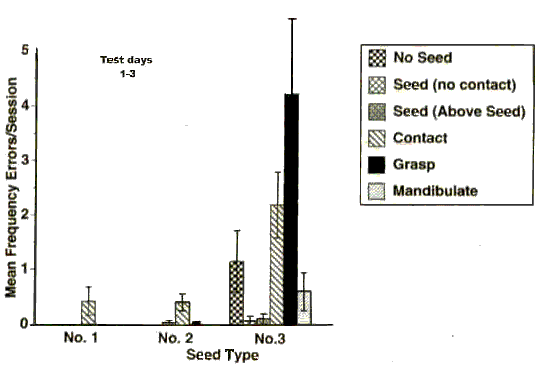
![]()
Video can't be printed.